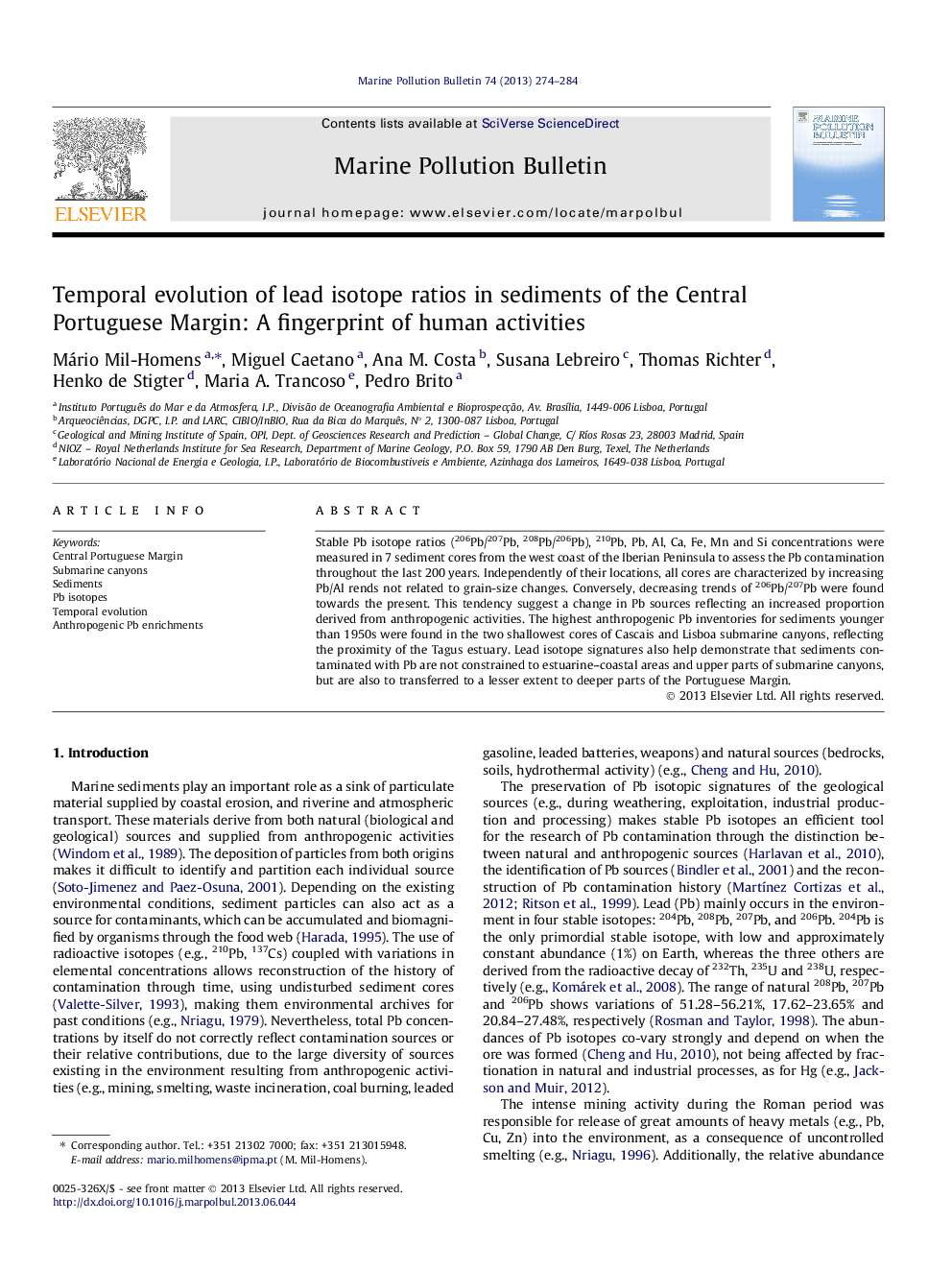| Article ID | Journal | Published Year | Pages | File Type |
|---|---|---|---|---|
| 6359712 | Marine Pollution Bulletin | 2013 | 11 Pages |
Abstract
Stable Pb isotope ratios (206Pb/207Pb, 208Pb/206Pb), 210Pb, Pb, Al, Ca, Fe, Mn and Si concentrations were measured in 7 sediment cores from the west coast of the Iberian Peninsula to assess the Pb contamination throughout the last 200Â years. Independently of their locations, all cores are characterized by increasing Pb/Al rends not related to grain-size changes. Conversely, decreasing trends of 206Pb/207Pb were found towards the present. This tendency suggest a change in Pb sources reflecting an increased proportion derived from anthropogenic activities. The highest anthropogenic Pb inventories for sediments younger than 1950s were found in the two shallowest cores of Cascais and Lisboa submarine canyons, reflecting the proximity of the Tagus estuary. Lead isotope signatures also help demonstrate that sediments contaminated with Pb are not constrained to estuarine-coastal areas and upper parts of submarine canyons, but are also to transferred to a lesser extent to deeper parts of the Portuguese Margin.
Related Topics
Physical Sciences and Engineering
Earth and Planetary Sciences
Oceanography
Authors
Mário Mil-Homens, Miguel Caetano, Ana M. Costa, Susana Lebreiro, Thomas Richter, Henko de Stigter, Maria A. Trancoso, Pedro Brito,
